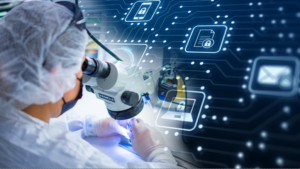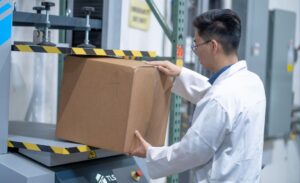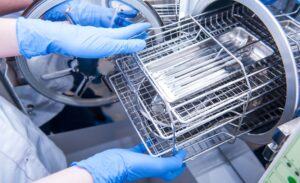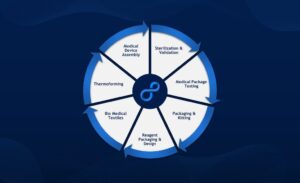Decontamination
Medical device decontamination is necessary to prevent healthcare-associated infections. Reusable medical devices must be cleaned and disinfected using a combination of processes to ensure they are safe for the end user or to be tested by engineers. Such processes require certain certifications and adherence to strict guidelines.
Life Science Outsourcing has proven expertise in helping medical device manufacturers navigate the decontamination process, enhance efficiencies, and meet all regulatory requirements.
Decontamination Expertise
Decontamination requires three steps, with each level being an aggregate of lower-level methods. Based on exposure to biohazardous materials, a device may not have to undergo all three levels to achieve sterility.
Levels in increasing order of intensity are:
• Level 1: Cleaning
• Level 2: Disinfecting
• Level 3: Sterilization
Cleaning
Cleaning a reusable medical device is the first and most important step in the decontamination process. It involves removing both visible and non-visible soil (such as blood, protein substances, and other debris) from the surface of the medical device using a detergent and water.
Disinfecting
In the disinfecting step, liquid chemicals are used to kill non-spore forming bacteria on the medical device. Some commonly-used disinfectants would be:
- Sodium hypochlorite (bleach)
- Ethyl alcohol
- Isopropyl alcohol (70%)
- Alconox
- Liquinox
- Cidex (glutaraldehyde)
Sterilization
The decontamination process destroys disease-causing microorganisms and eliminates transmissible agents such as spores and bacteria.
Different methods of sterilization provided by Life Science Outsourcing include:
- Irradiation (Gamma or E-Beam)
- Ethylene Oxide (EtO)
- Steam Sterilization
- Dry Heat Sterilization
Life Science Outsourcing is one of the few regulated services companies to offer EtO.
The sterilization method is based on the device’s ability to withstand heat or moisture and the extent of sterilization required.
Devices with cavities or tubular openings require low level steam sterilization, but instruments able to withstand high heat levels would qualify for high-heat steam sterilization.
Sterilization Standards
In addition to ISO 13485 (Quality Management System Guidelines), LSO adheres to other relevant sterilization standards including:
- OSHA Regulations (1910.1030) – Employee Safety & Exposure Control Plan
- ISO 17665-1:2006 – Moist Heat/Steam Sterilization
- ISO 11137-1:2012 – Radiation/Gamma Ray Sterilization
- ISO 11135-1:2007 – Ethylene Oxide Sterilization
- ISO 25424:2009 – Low temperature steam and formaldehyde method
- ISO 15882:2008 – Guidance on Chemical indicators during Sterilization
Sterility Assurance Level (SAL)
Sterility assurance level is defined as “the probability of a single unit being non-sterile after it has been subjected to the sterilization process.”
Once a device has been sterilized, tests are conducted to determine if the desired sterility levels have been obtained. LSO tests for this using both biological indicator (BI) testing and chemical indicators.
Packaging and Transportation Guidelines
It is critical that prescribed guidelines are followed when packaging and transporting contaminated medical devices due to the biohazardous risk involved. Logistics companies and transportation organizations insist that packaging of diagnostic specimens and environmental test samples includes four basic components:
- Watertight primary receptacles
- Watertight secondary receptacles
- Absorbent material
- Sturdy outer packaging
Orthopedic Decontamination
For years, the orthopedic industry has faced the problem of excess inventory in hospitals and sales representative trunk stock. No one knew what to do with product once it was returned.
Life Science Outsourcing set out to solve this problem through its decontamination and returns processing service. Our unique capabilities and strategic location allow us to decontaminate via autoclave and inspect, repack and redeploy product returns quickly and inexpensively.
The program allows our clients to maximize value from underused inventory while increasing responsiveness to their sales representatives.
We provide this service to companies of all sizes who are looking to reduce field inventory and minimize expenses.




